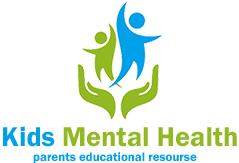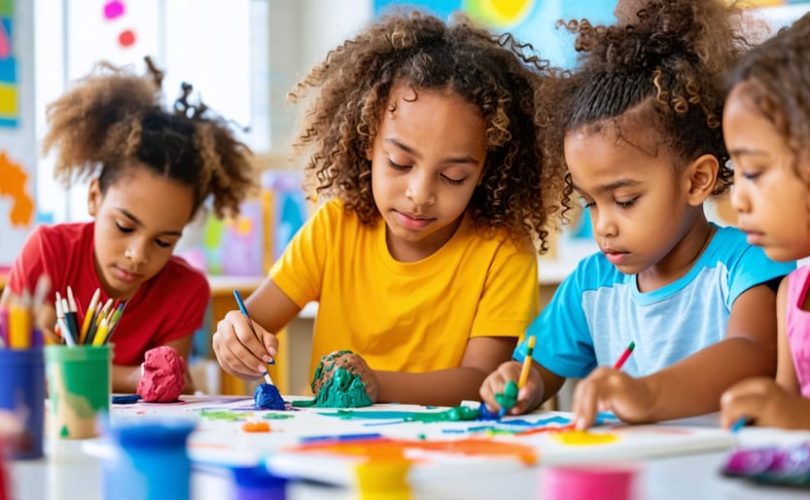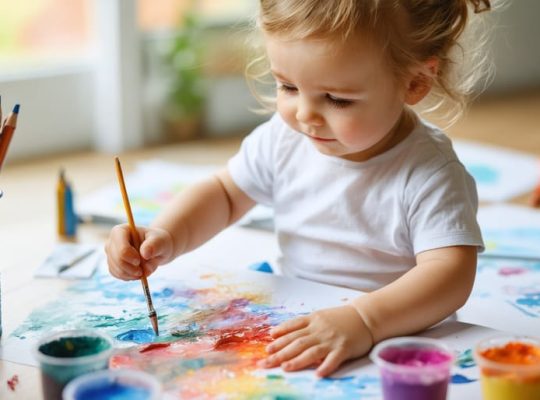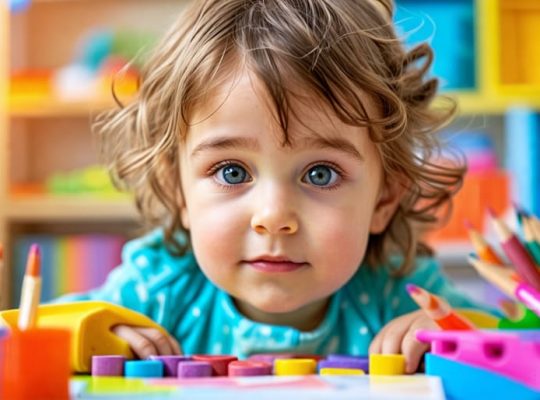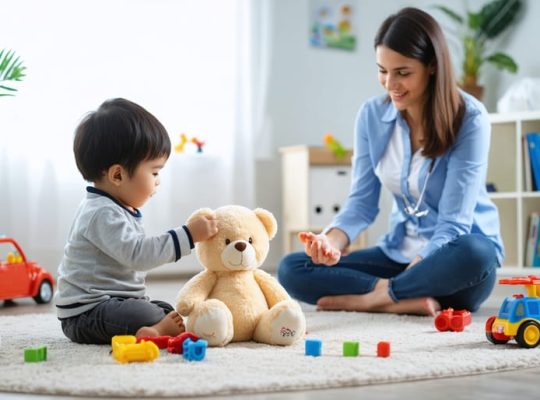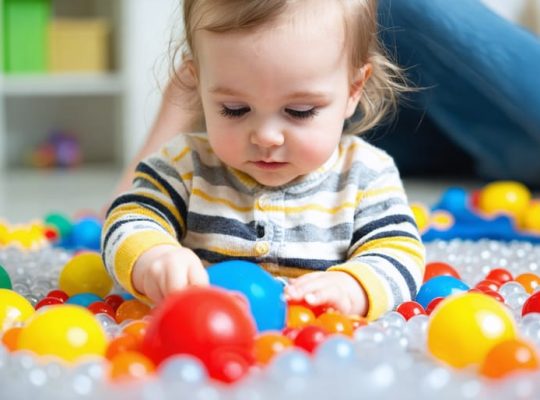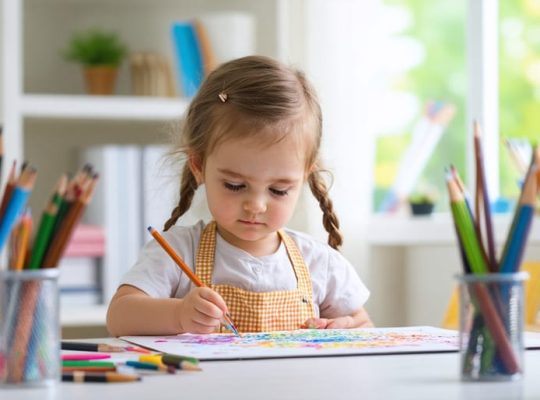Engage children in creating gratitude journals filled with drawings of daily joys to cultivate positivity and emotional awareness. Facilitate a collaborative mural project in a classroom or therapy setting, where each child contributes artwork reflecting their emotions, fostering communication and empathy. Introduce guided meditation followed by expressive drawing sessions to help children visualize and articulate their feelings, enhancing mindfulness and self-regulation. Encourage creating “emotion masks,” allowing children to explore and depict various emotions, helping them understand and express complex feelings more effectively.
The Benefits of Art Therapy
Emotional Expression and Relief
Art therapy provides children with a unique way to explore and express their emotions in a safe environment. Through activities like drawing, painting, and sculpting, kids can convey feelings that may be difficult to articulate verbally. This process not only helps them to recognize and understand their emotions but also offers a meaningful outlet for relief. It becomes a personal journey where children can express joy, anger, fear, or sadness without judgment. According to Dr. Emily Larson, a child psychologist, art allows children to “visualize their emotional challenges,” which can be a powerful step toward healing. Personal stories from parents highlight how creating art has helped their children process complex emotions. By embracing these creative outlets, you can further nurture your child’s mental well-being.
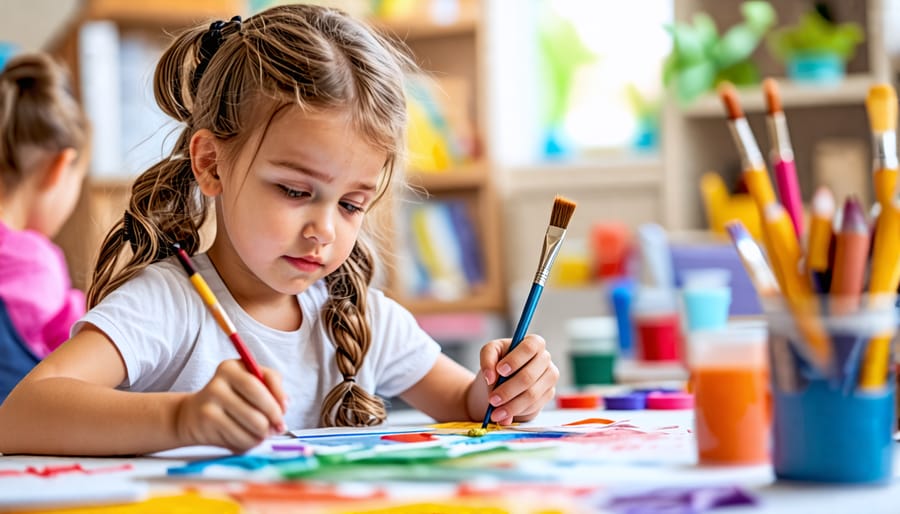
Boosting Confidence and Self-Esteem
Art activities can be powerful tools to help children build confidence and self-esteem. One way to achieve this is through creating self-portraits. These not only allow kids to express themselves but also encourage them to see their unique qualities. As they progress in their artistic journey, children learn to appreciate their abilities and take pride in their creations. Another engaging activity is designing a ‘strengths collage.’ Collect images and words from magazines that represent each child’s positive traits. As they assemble their collages, discussions can focus on celebrating their individual strengths, fostering a sense of self-worth. Parents and teachers can share personal stories about overcoming self-doubt through art, providing relatable experiences that reinforce resilience. Experts often highlight these activities as effective in boosting a child’s inner growth, making them valuable tools for emotional development.
Easy Art Therapy Ideas for Home and Classroom
Painting to Music
Painting to music is a wonderful way to help children express their emotions creatively. This activity encourages kids to let their feelings flow onto the canvas, guided by the rhythm and mood of the music they listen to. As they paint, music serves as an emotional backdrop, offering a safe space to explore feelings that might be hard to articulate. Dr. Lisa Carter, a child psychologist, shares that this method can help children “connect emotions with artistic expression, making it easier for them to understand and communicate complex feelings.” Parents and teachers can play different music genres to see how each affects the child’s creative expression, fostering a supportive environment where emotional growth is nurtured.
Storytelling Through Collage
Collage making can be a powerful tool for children to tell their stories and express emotions in a safe and engaging way. By selecting images, colors, and words, children create a visual narrative that can reflect their feelings, experiences, and dreams. This process not only enhances their creativity but also fosters self-discovery and emotional release. Encouraging children to explain their collages adds another layer of understanding and communication. Supported by expert opinions, this method helps children articulate and explore their inner world, promoting healing and growth. Sharing personal stories from collage activities can deepen connections and understanding between children and adults.

Mood Mandalas
Creating mandalas can be a powerful way for children to explore their emotions and reflect on their inner state. This art therapy approach involves drawing or coloring intricate circular designs, which can help promote relaxation and mindfulness. As children choose colors and create patterns, they naturally engage in a form of self-expression that may reveal underlying feelings. Experts suggest that mandalas encourage emotional balance, making them suitable for children who might find verbal expression challenging. By focusing on the process rather than the outcome, children can experience a sense of calm and gain insights into their emotional world.
Clay Creations for Calm
Clay modeling offers a gentle way for children to express emotions and find a sense of calm. Engaging their hands and imagination, kids can shape and mold clay to create anything they envision, providing a tactile experience that helps ground their thoughts. According to child psychologist Dr. Emily Green, clay work enhances sensory perception and improves focus, making it an effective tool for self-regulation. Sarah, a mother of two, notes how her children often feel more relaxed and happy after a clay session, highlighting its potential to strengthen emotional resilience. As children manipulate clay, they can discover a soothing rhythm, allowing stress and anxiety to melt away.
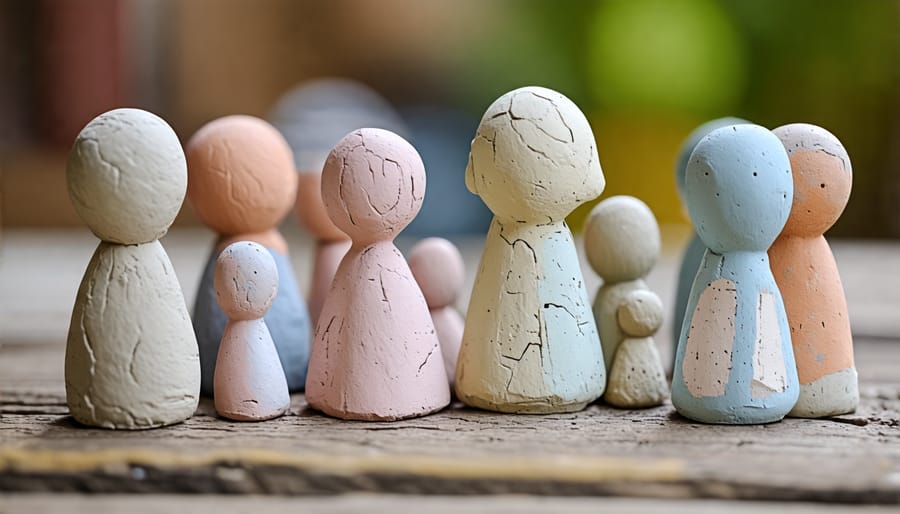
Special Considerations for Different Age Groups
Toddlers and Preschoolers
Encouraging toddlers and preschoolers to express their feelings through art can be a wonderful way to nurture their mental well-being. Simple activities like finger painting can be incredibly soothing and fun. The tactile sensation of paint on their fingers is not only enjoyable but also serves as a means for them to communicate emotions they haven’t yet learned to articulate. Sticker collages are another engaging idea, allowing kids to stick and peel, creating colorful worlds that reflect their imagination. As a bonus, it enhances their fine motor skills.
For a more sensory-rich experience, consider making a DIY stress ball using balloons, flour, and water. Squeezing this homemade creation can help little ones release tension and learn self-soothing techniques. Many parents and educators have shared stories of how these art-based activities have become essential parts of daily routines, providing comfort and joy. Supported by experts, integrating creativity into early childhood can foster emotional growth and resilience in these formative years.
School-Aged Children
Engaging school-aged children in art therapy offers a wonderful opportunity to enhance their emotional well-being through creative expression. At this age, children start developing more complex skills, enabling them to tackle projects that cater to their expanding creativity and cognitive abilities. Introducing activities like creating a collage of emotions can be particularly effective. Encourage children to cut out images and words from magazines that reflect different feelings, helping them articulate emotions that might be hard to put into words. Another idea is to use storytelling through drawing. Ask them to illustrate a story about a brave character overcoming challenges, which can indirectly allow them to express and work through their own experiences.
Experts often highlight the importance of allowing children the freedom to choose their materials and themes. Personal stories from caregivers have shown that when children are given autonomy in their projects, they feel more empowered and understood. This sense of agency is crucial for building confidence and resilience. Art becomes not just a way to express feelings, but a tool for emotional growth and transformation.
Incorporating Experts and Personal Stories
Art therapy has gained recognition for its profound impact on children’s mental health, offering a nurturing space for self-expression and healing. Insights from experts in the field reveal that art therapy can significantly aid in emotional development and provide a safe outlet for children to communicate feelings that they might find difficult to articulate verbally. According to child psychologists, engaging in art activities helps children process complex emotions and boosts their overall mental well-being.
A heartfelt testimonial from a parent highlights a transformative experience: “Art therapy has been a lifesaver for our child. It’s not just about drawing or painting; it’s about opening up in a way that words sometimes can’t.” Such personal stories underscore the real-world benefits of incorporating art therapy into mental health strategies, particularly in educational or healthcare settings. By appreciating these multifaceted benefits, parents, teachers, and healthcare professionals can better support children in trusting their creative expressions.
For those seeking to explore effective methods to enhance children’s emotional health, understanding how art therapy engages both the body and mind is essential. This approach also contributes to broader efforts to shatter the stigma surrounding mental health challenges in children, fostering a more compassionate and supportive environment for young minds to thrive.
Conclusion: Embracing Art for Mental Wellness
Integrating art therapy into daily routines is a beautiful way to promote emotional well-being in children. For parents, teachers, and healthcare professionals seeking ways to nurture children’s mental health, embracing art provides a meaningful path. Art offers a safe haven for kids to express their feelings freely, helping them to process emotions and build resilience. It’s not merely about creating aesthetically pleasing pieces but about unlocking emotional resilience through creative expression.
By incorporating simple art activities into everyday life, caregivers can provide children with important tools to articulate their thoughts and feelings. This can range from painting and drawing to music and dance. These activities enable children to explore their emotions in a non-threatening manner, fostering a sense of achievement and boosting their self-esteem.
Experts emphasize that art therapy is not only beneficial for creative development but also for mental wellness, as it allows children to connect authentically with their inner worlds. Personal stories from those who have integrated art into their routines underscore its powerful impact in improving communication and emotional regulation.
Incorporating these practices requires no special artistic skills but rather an openness to explore and connect. By embracing art as part of daily life, caregivers can help children build a strong foundation for emotional resilience, paving the way for healthier, happier futures.
